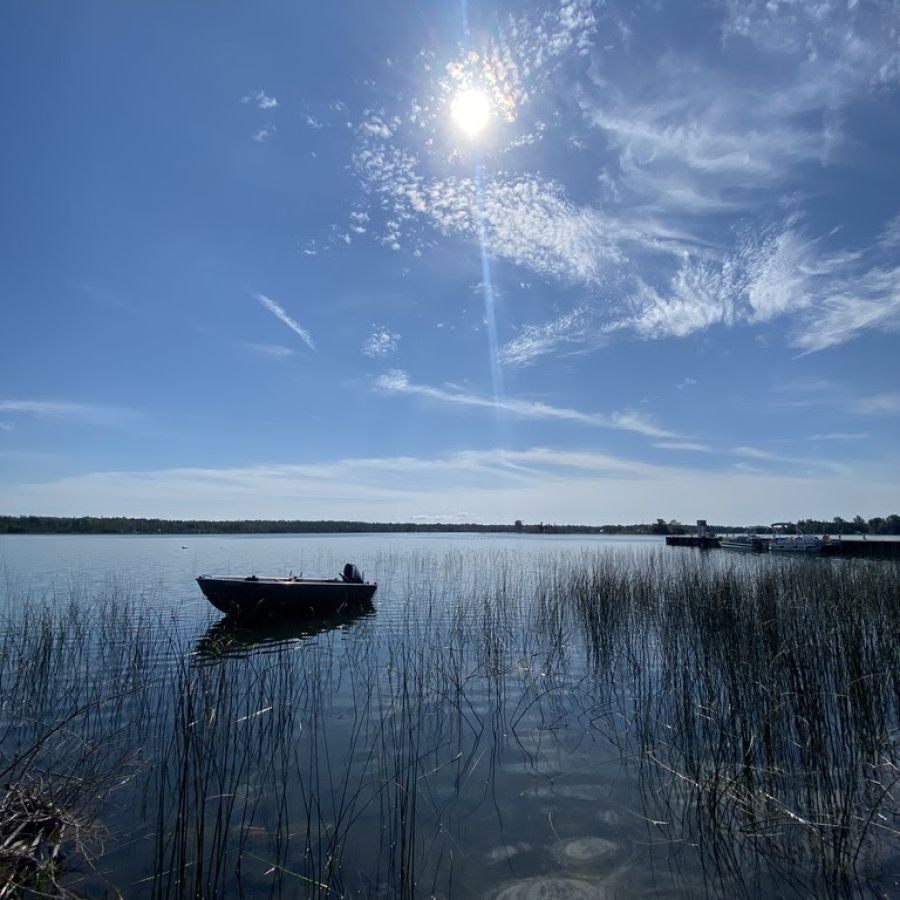Together with Giigoonyag (Fishes) Project - Media Release
09 May 2022
Together with Giigoonyag (Fishes) Project.
The Saugeen Ojibway Nation, Parks Canada, and Ontario’s Ministry of Northern Development, Mines, Natural Resources and Forestry (NDMNRF), are pleased to be working collaboratively on the Together with Giigoonyag (fishes) research project. The project aims to better understand the health of dikameg (lake whitefish) and other fish species in parts of Lake Huron and Georgian Bay, using a Two-Eyed Seeing Approach that brings together Saugeen Ojibway Nation’s (SON) ecological knowledge and Western-science knowledge systems.
Together with Giigoonyag is a five-year research project focused on changes in the Lake Huron ecosystem. With a particular focus on dikameg decline, research is being conducted into habitat use, spawning shoals, recruitment, population dynamics, and interactions with other species in the food web.
The Two Eyed Seeing Approach to studying Lake Huron’s fish populations generates opportunities for mutual learning, addresses gaps in understanding, increases the information available for decision making processes and helps to foster collaborative and respectful relationships.
SON community members possess a wealth of multi-generational knowledge and understandings of Lake Huron’s ecosystem and fish populations within the SON traditional waters, which encompass a large region of Lake Huron. The Two-Eyed Seeing Approach is most effective at a local scale where SON’s ecological knowledge of the water and the land have been passed down through generations. Knowledge holders in SON communities will be sharing their knowledge through interviews and mapping, while researchers will be undertaking a quantitative analysis of fisheries data.
The SON community, as well as research scientists within the Great Lakes have identified a knowledge gap in relation to dikameg movement and behaviour. To learn more about dikameg movement and behavior, the Together with Giigoonyag project will be developing of an acoustic telemetry array for Lake Huron.
The project partners (SON, NDMNRF and PCA) have begun to tag dikameg with acoustic transmitters and have begun to place of receivers within Lake Huron. Transmitters are electronic tags that broadcast a series of “pings” (sound pulses) into the surrounding water. These tags will be surgically implanted into fish of interest and released back into the wild. Listening stations (receivers) are placed on the bottom of the lake at various locations to “listen” for tagged fish as they swim by. The receivers are periodically retrieved and the information they have recorded is downloaded for further analysis. This is the first time that an acoustic telemetry project of this scale is undertaken in Lake Huron.
The project’s research is being done in ethical space, using a framework to ensure that each knowledge system is respected and valued equally.
Quotes
“The Government of Canada recognizes that Indigenous knowledge and western science, together, can help provide solutions to current environmental challenges, including declines in Lake Whitefish. The work that Parks Canada, the Saugeen Ojibway Nation and the Ontario Ministry of Northern Development, Mines, Natural Resources and Forestry are doing together through the Together with Giigoonyag project will help develop a shared understanding and improve decision making to protect waters – and the species that call these waters home – for generations to come.”
The Honourable Steven Guilbeault,
Minister of Environment and Climate Change and Minister responsible for Parks Canada

